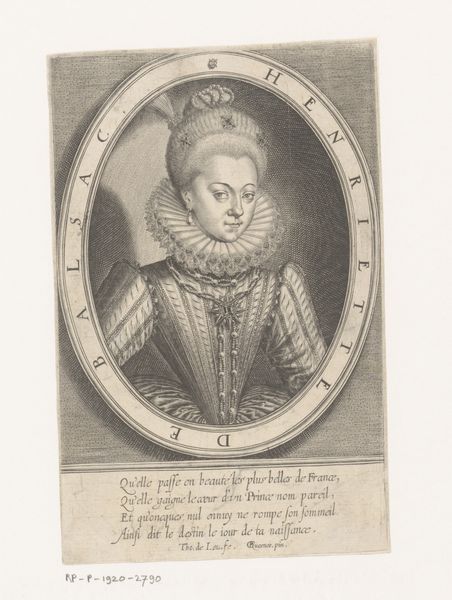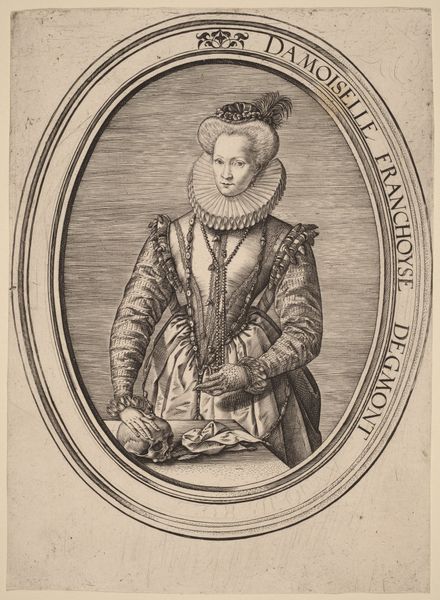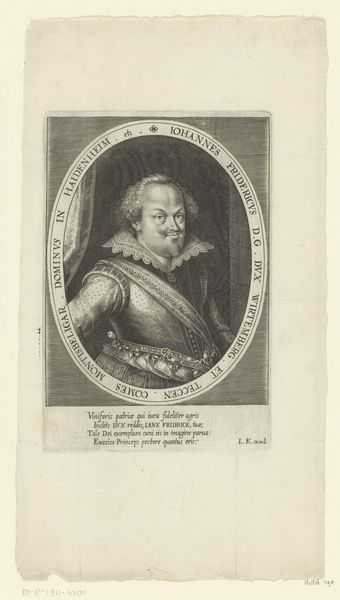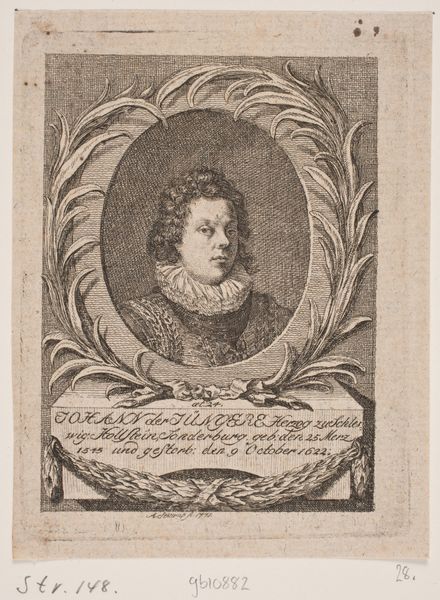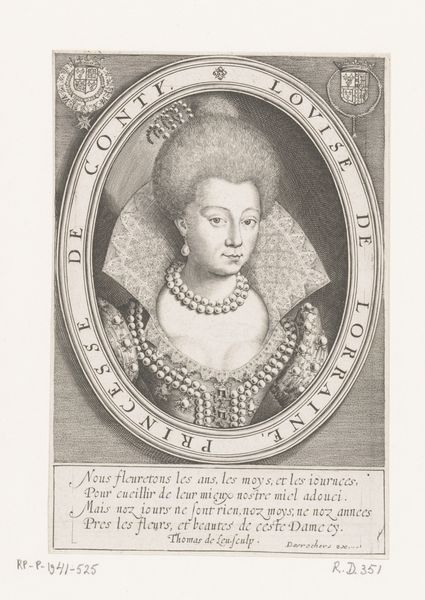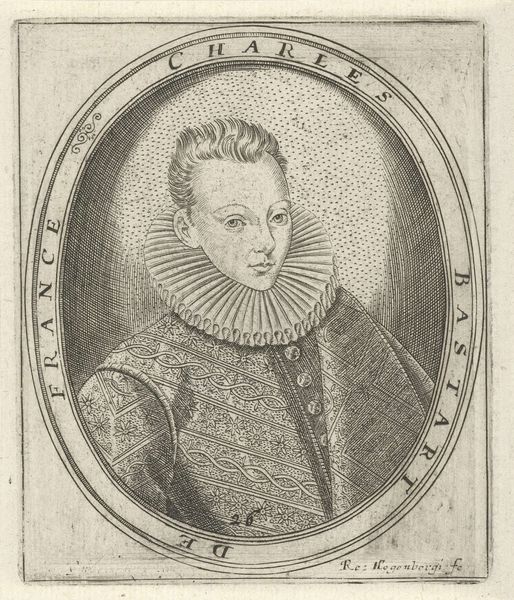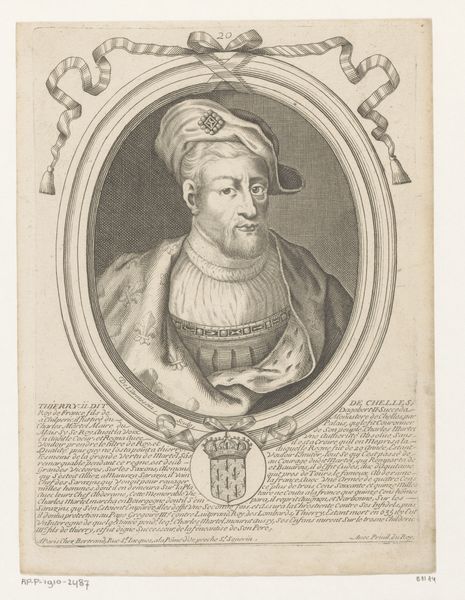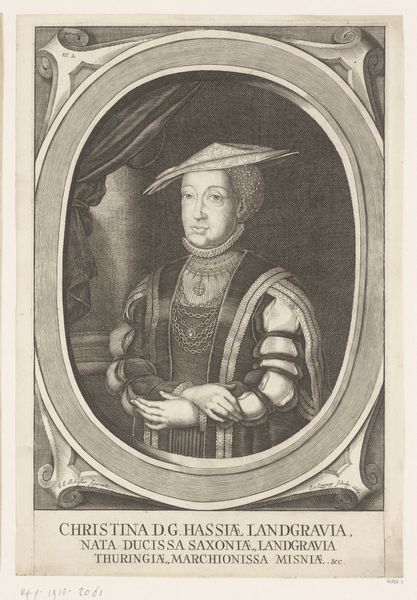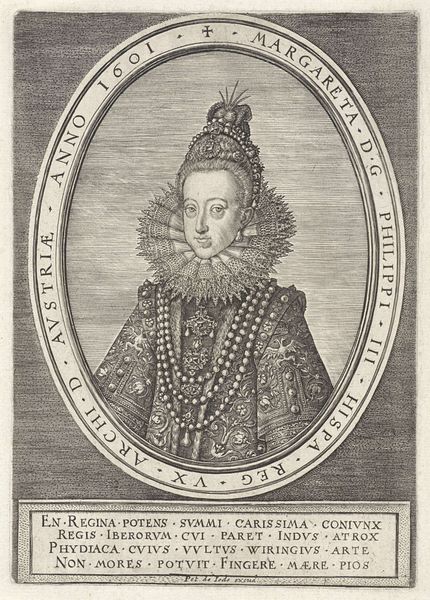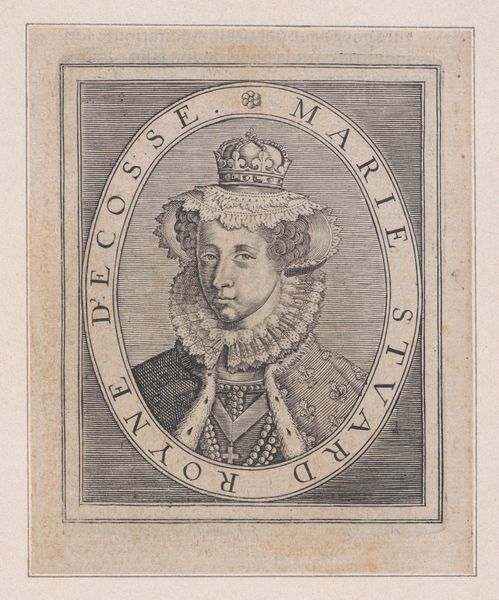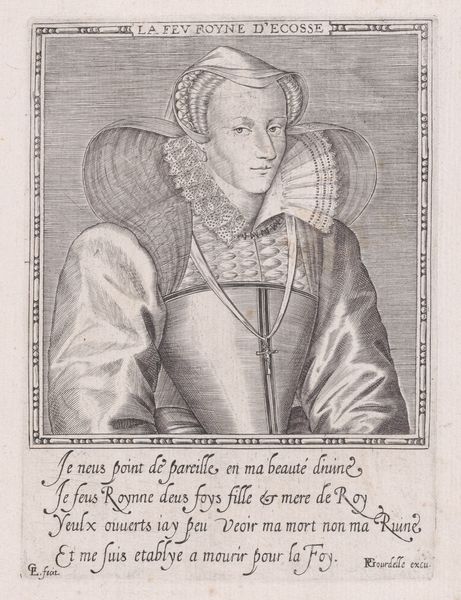
drawing, ornament, print, paper, engraving
#
portrait
#
drawing
#
ornament
# print
#
old engraving style
#
mannerism
#
figuration
#
paper
#
personal sketchbook
#
line
#
history-painting
#
engraving
Dimensions: height 166 mm, width 107 mm
Copyright: Rijks Museum: Open Domain
Curator: This is a portrait of Louise of Lorraine, created between 1576 and 1614 by Thomas de Leu. It's an engraving, a print on paper, showcasing the artistry of the era. Editor: It strikes me immediately as intensely formal and decorative. Her dress, her ruff, even her hairstyle... everything seems carefully constructed to project an image of royalty. Curator: Absolutely. The artist was working in a Mannerist style. Look at the swirling text framing the portrait within an oval, practically embracing her image—the entire composition conveys the power and status associated with the subject. As a member of a significant family in European history, lineage was everything. Editor: The ruff, the jeweled ornamentation of her dress—they’re almost like a visual code of her status. The clothing alone signifies power, wealth and dynasty. There's something also in her serene and unreadable expression; I wonder if that lack of expressivity wasn’t also part of the visual language surrounding powerful women at this time. Curator: I think that’s very insightful. What appears almost flat or reserved on the surface, is in actuality quite calculated to embody ideals of grace and nobility—even an element of distance or invulnerability. Her adornments function almost like armor. Her role was largely defined by her connection to powerful men, shaping events by way of dowry, childbirth, and inheritance, so she existed very much within these expectations. Editor: Looking at how certain forms and symbols repeat - those circles, the swirling ornament - do you think they also echo cycles of dynasty or perhaps something about perceived harmony of the soul or society? Curator: That's a fantastic way to think about it. The visual language certainly evokes a kind of perpetual motion or enduring legacy. Editor: Examining it more closely, the artist doesn't just portray an individual; they’re projecting dynastic symbolism for generations to come. It is more than just personal. Curator: Exactly. Artworks like these help us to remember that history is constructed, not simply reflected. We learn about past values and expectations in powerful ways through this artistic expression.
Comments
No comments
Be the first to comment and join the conversation on the ultimate creative platform.
